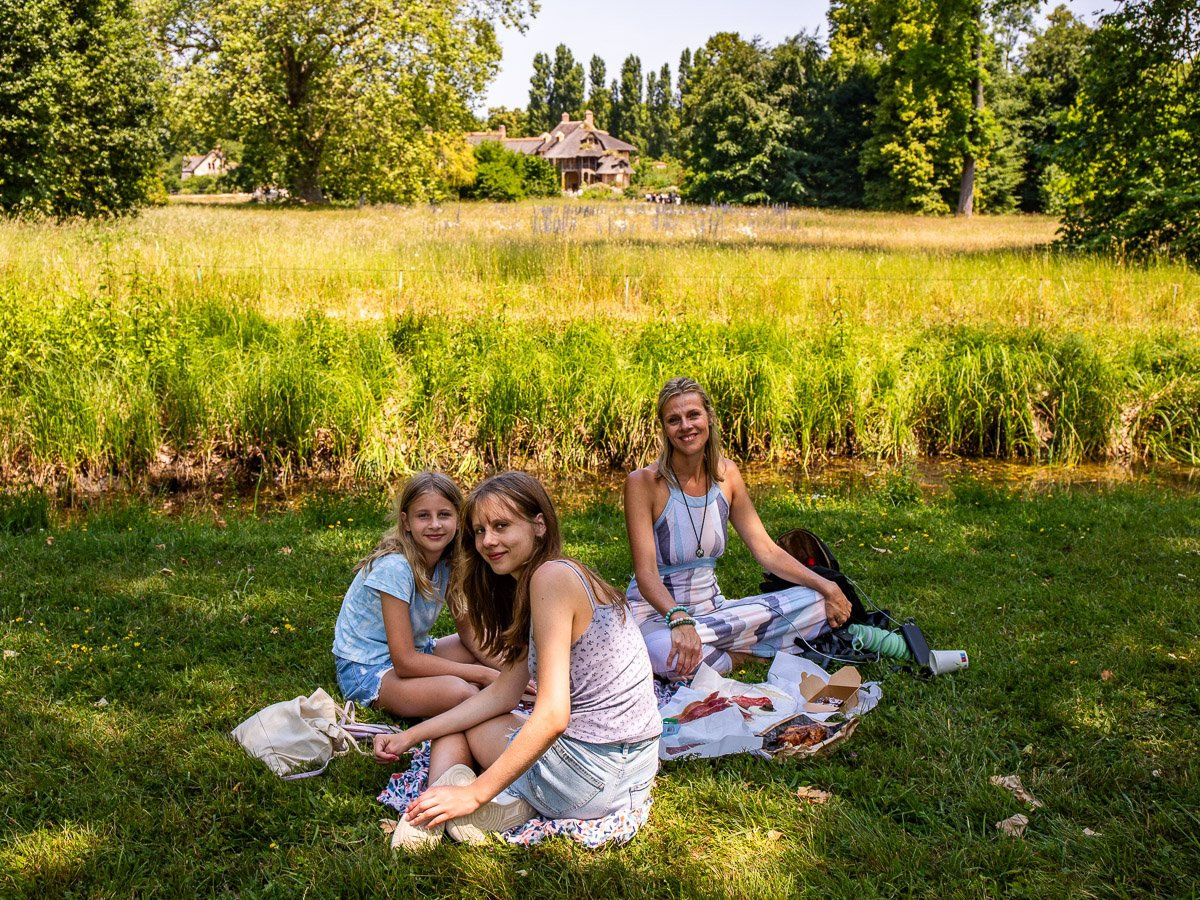This post may contain affiliate links. We may receive a small commission, at no cost to you, if you make a purchase. Read Disclosure.
Are you planning a trip to Europe and think you have everything mapped out, but not sure what you need to know for when you’re actually on the ground?
Well, then you’re in the right place! Whether it’s your first time or you’re a seasoned traveler, exploring the enchanting continent is always an incredible experience.
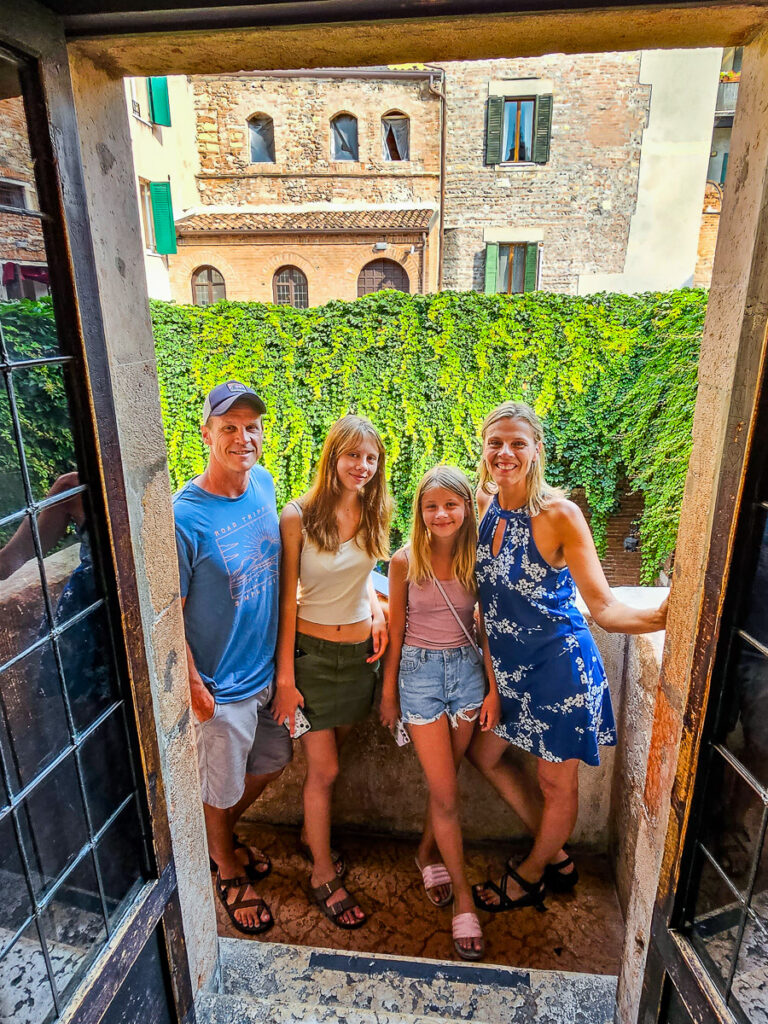
In this guide, we’ll share valuable tips and insights to make your European adventure even more memorable.
From navigating transportation to dealing with the stresses of finding places to eat, we’ve got you covered.
If you’re in need of some tips for visiting Europe with kids, then we hope the following words of advice help you create unforgettable memories with the family without the stress.
Essential Tips for Visiting Europe With Kids
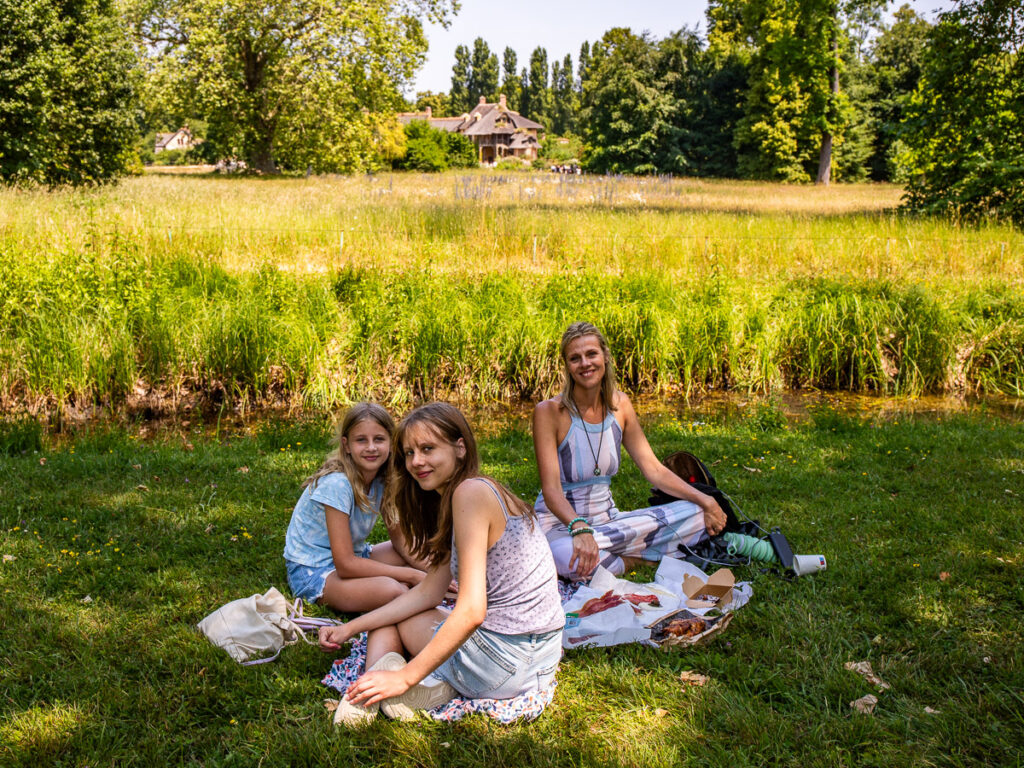
After you have planned your European trip with kids and everything has been prepared before you go, it’s time to think about what to plan when you’re actually there.
Here are a few tips for visiting Europe that will help you while you’re traveling around the continent.
1. Pack Minimal + Carry on (that you can also check in for free)
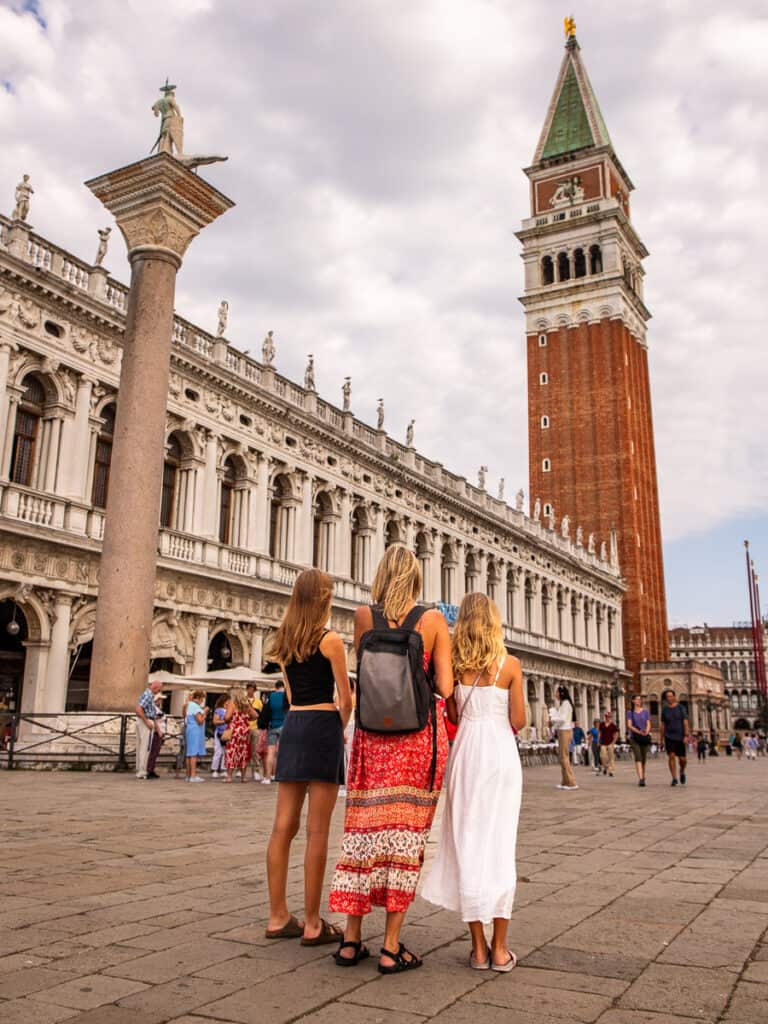
For our family, we had three carryon backpacks and one checked in suitcase. We wanted a check in, for liquids and in case of any excess baggage.
The carry-on baggage allowances can be different flying within Europe – and they may weigh them, so we wanted to have that checked bag in case. They never weighed them!
Packing minimally is much easier to do if visiting Europe in the summer as generally there is one temperature – hot. I even managed to pack carry on for the 4-week trip.
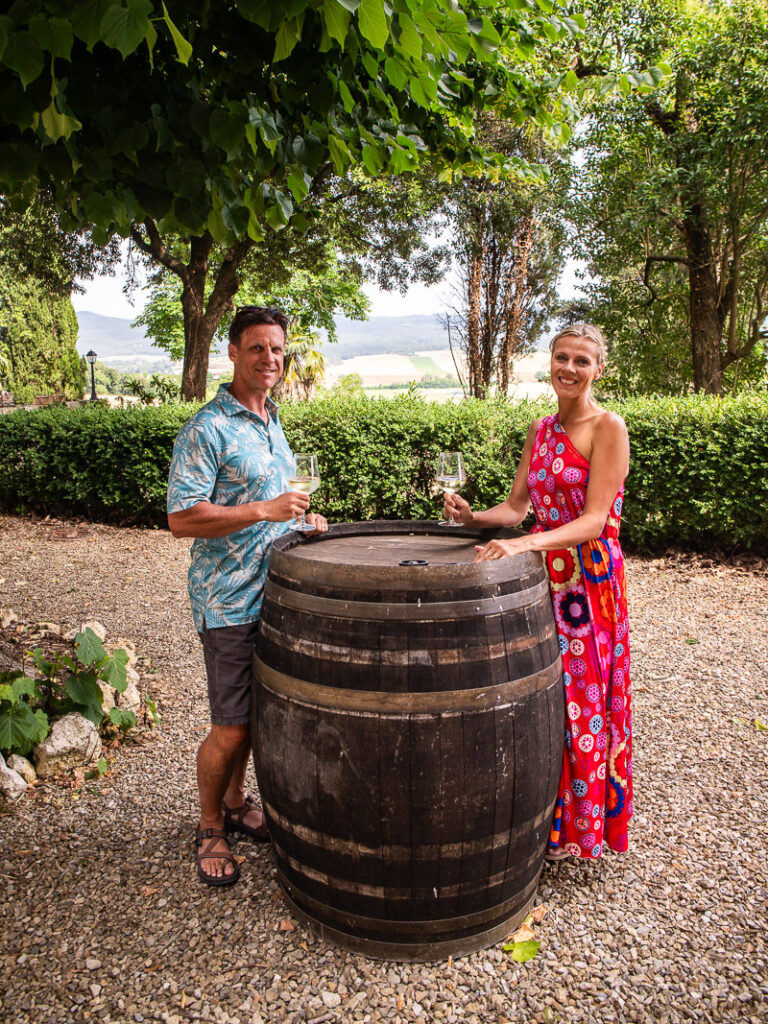
However, I checked in my luggage most of the time. Why?
Because we had to wait to pick up the one checked bag anyway and I’d rather not lug my bag around with me.
And because I never had to pay for my checked luggage – which is the only reason I’ll check it in.
Airlines now have created such a s**t fight with their outrageous fees for checked bags, that most people bring carry on. Planes don’t have the space for all that carry on, so they ask for volunteers to check in bags for free.
I always volunteer. (Unless I have tight connections and can’t wait for the luggage carousel.)
Pack layers that can mix and match to create different outfits and have a good pair of walking shoes, I suggest sandals in the summer. It’s worth the investment.
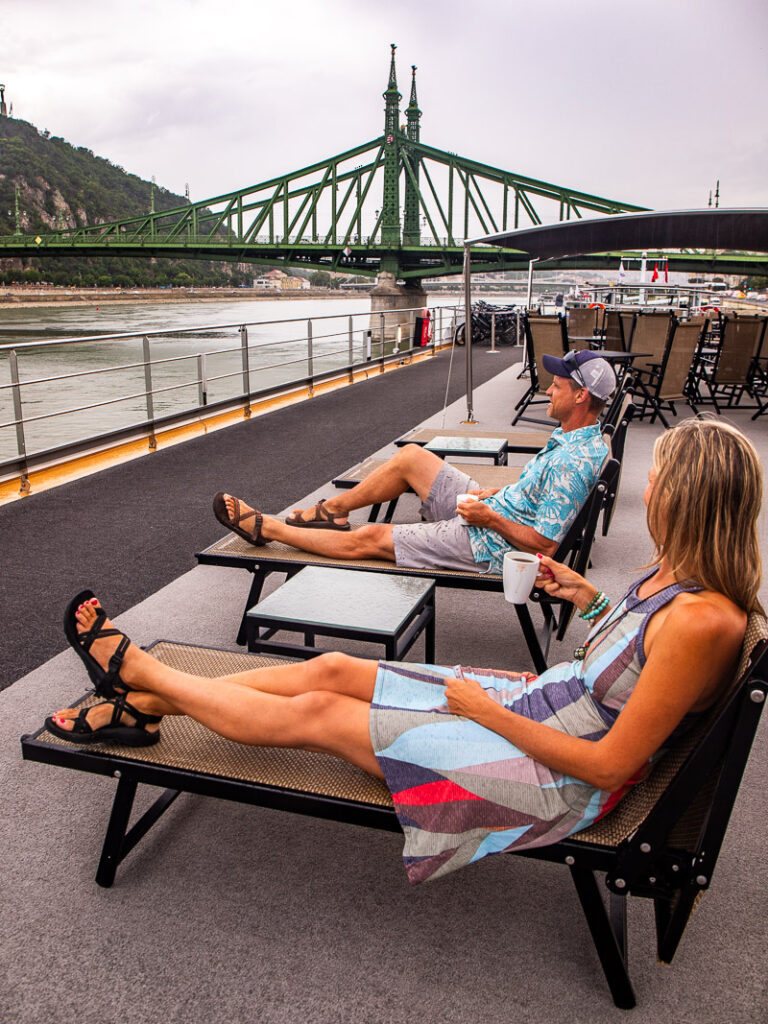
Crag and I love our super comfortable Chaco hiking sandals. I chose black so I could wear them with all outfits and for all occasions, even wearing them with a dress if I wanted to elevate my style. I also threw in some flip flops, but only really needed the chaos
Also, check your children’s suitcase after they pack. We’ve encouraged our girls to pack their own luggage since they were toddlers. They are generally great at it, but I didn’t check properly this time.
Kalyra had packed her heavy Dr Martin shoes (which she wore once – way too hot), a heavy winter jacket, and half her bookshelf. Savannah also packed 6 pairs of denim shorts which she refused to reduce.
THE LUGGAGE WE TOOK TO EUROPE (Family of four)
2. Book (almost) Everything in Advance
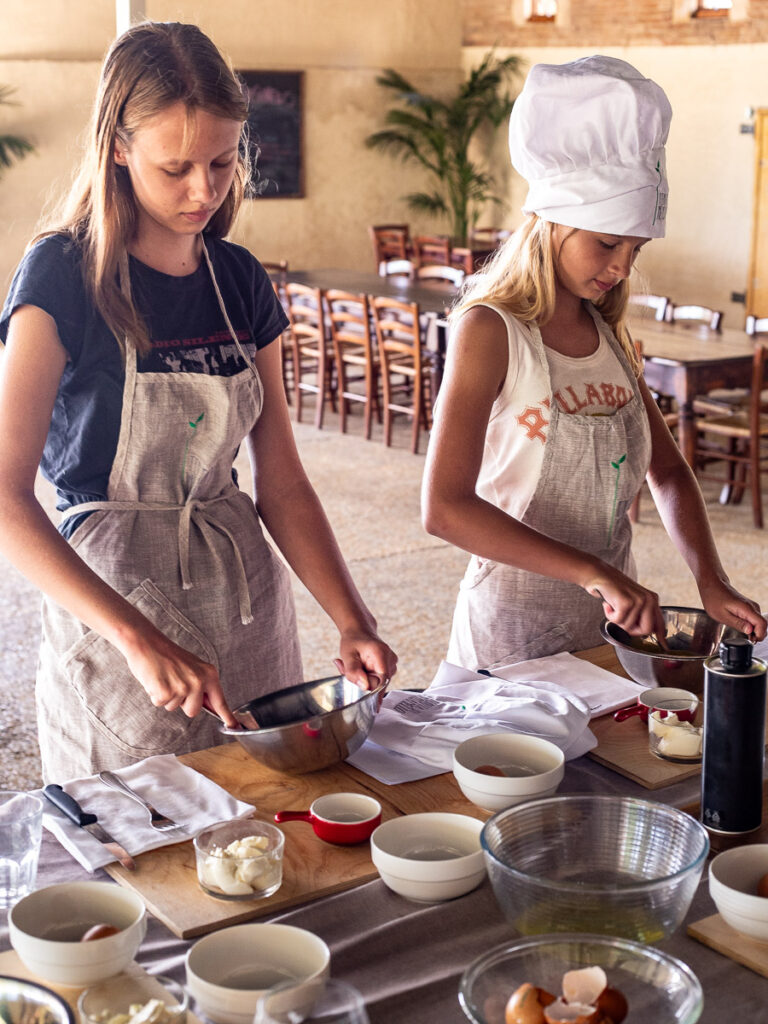
For Europe, especially in the summer, if you don’t book in advance (and sometimes far in advance) you will miss out.
We booked our flights three months in advance, or accommodation not long after, and our tours and attractions at least a month in advance.
That was even too late for some tours and attractions like the Eiffel Tower (we missed out on second floor tickets, a boat tour of Venice, dome climb of The Vatican, and dome climb of the Duomo in Florence.
Most tours and hotels do offer free cancelation up to 24 hours in advance, so if you do feel like doing something spontaneous, there is always an option to cancel and try to rebook for another day.
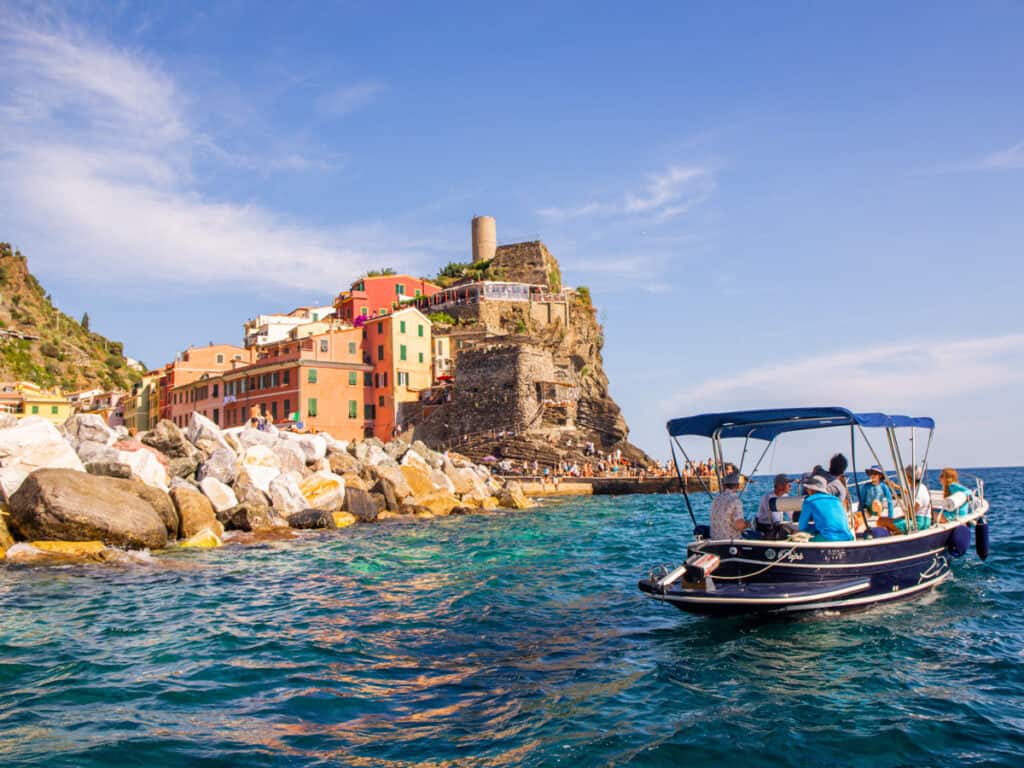
If there is a tour or attraction you decide last minute you want to do, book online as soon as you can. Our timed tickets for the Eiffel Tower were cancelled due to a delayed opening. I hopped online straight away and was able to purchase more tickets for the earliest tour the next day. You want to avoid having to line up to buy your ticket as much as possible.
We recommend using booking sites like Get Your Guide, Viator, or Tiqets as much as possible. They’re guided tours will give you guaranteed entry as they pre-purchase tickets. So if an attraction you want is sold out, they may have the entry ticket you need.
Don’t forget to make a note of free attractions to visit too, such as the Trevi Fountain in Rome or the Arc de Triomphe in Paris, and plan to visit them as early as you can to avoid crowds, especially Trevi Fountain.
3. Tips for Tours and Attractions in Europe
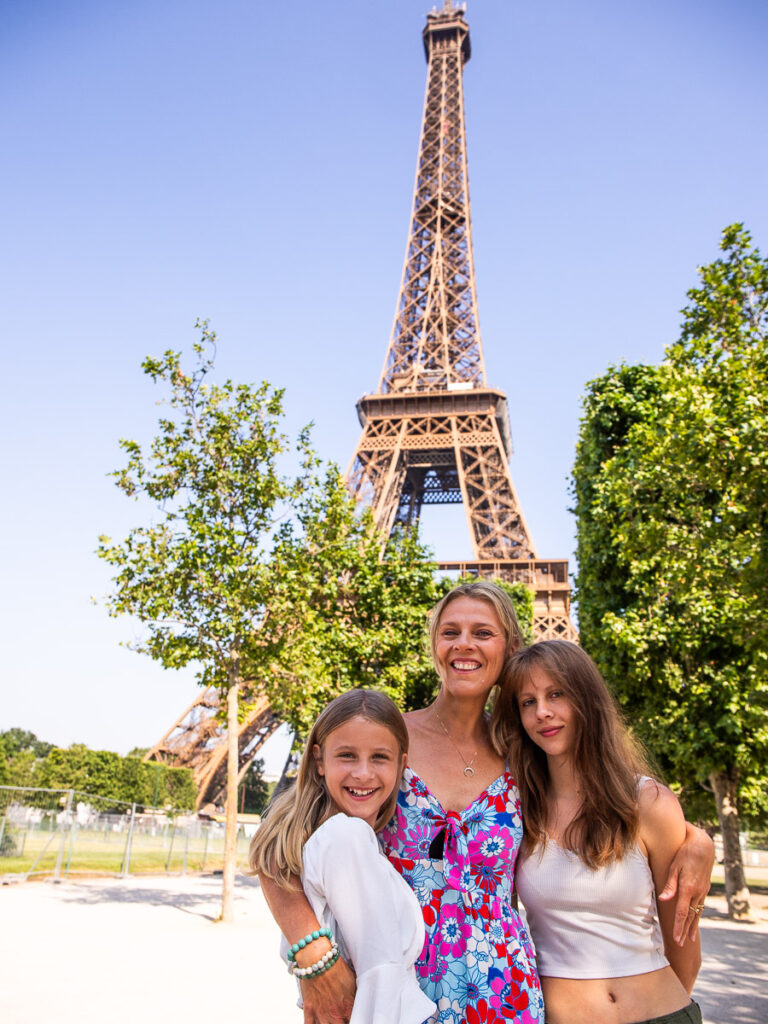
We share a lot of tips on tours and attractions in Europe on our guide to planning a trip to Europe with kids.
Here are a few essentials for you to know before you arrive in Europe:
- Purchase skip the line passes and timed entries. Lines are very long to purchase tickets on the day.
- Guided tours are a fantastic way to engage kids, gain deeper insights, get a general overview of a city, and get steered through crowds. We love the small group tours in Europe offered by Take Walks and LivTours.
- Food tours and cooking classes are an enjoyable way to learn more about culture. Kids love them! Also check by Take Walks and LivTours for food tours and cooking classes.
- Book first tour, or timed-entry slot, for the day fir a greater chance of fewer crowds, and less delays.
- Kids can often be free for attractions in Europe.
- Some attractions may be closed on certain days, so always check.
- Leave yourself enough time to get through security, which can often be slow.
- Sometimes there is no clearly marked lane at attractions for people with skip the line tickets or timed entry tickets. Several times in Paris, we ended up waiting on a line that was for general admission. It wasn’t until I went up the front to speak to the attendant that they said, “oh no, you don’t have to wait” and ushered us in. Always ask.
- Make sure you have a scarf in your bag, to cover shoulders when visiting religious sites, including for the kids. Many may also want your knees covered. I had to buy Kalyra a scarf to wrap around her waist and cover her knees for St Mark’s Basilica in Venice. There will always be scarf hawkers nearby capitalizing on this opportunity if you get stuck!
4. Tips for Eating Out in Europe

- Most people in Europe eat late. A lot of restaurants won’t even open till around 7:30. So go early and you’re sure to get a table.
- Do a food tour during mealtimes and you’ve hit two birds with one stone.
- Aperitivo Hour (generally around 4-7) is great as you can get free snacks with your aperol spritz (usually it’s not much just nuts and chips, btu some can be fancier)
- Grab a baguette with brie, and a bottle of wine from a local market and enjoy a fresh picnic in one of the many gorgeous parks or viewpoints and let the kids play.
- Pastries and coffee from an espresso bar in Italy, or bakery (boulangerie) in France are cheap and delicious breakfasts. How can a kid say no to chocolate pastries?
- Food and wine is cleaner and healthier in Europe so enjoy it! I overindulged and did not put on any weight!
- There are many easy to go places where you can get a panini, sandwich, and other easy lunch options.
- Order to go whenever you can – that includes coffee – as it’s always cheaper than sitting down.
- Daily gelato? Is there really any other way?
- Eat away from the main squares (piazzas/ campos) and tourist attractions and head to smaller streets. It will be cheaper and often better.
What about Food allergies?
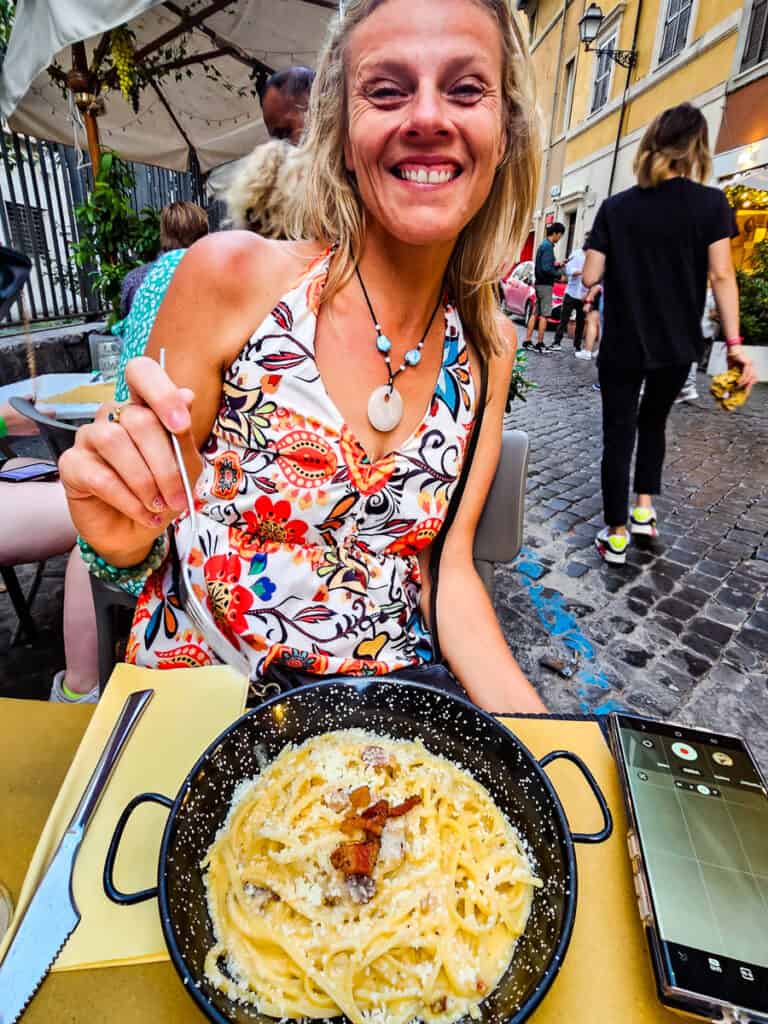
I found Europe to be pretty good with food allergies, especially Italy! I was shocked at how many gluten free options they had. Our favorite restaurant in Rome was Mama Eats in Trastevere, a completely gluten free restaurant with delicious Italian food.
France not so much. I think they’re horrified that you won’t eat flour!!
At least they understand what gluten free means, unlike many places in the US. I’ve even had airline hostesses give me a packet of pretzels when I ask if they have gluten free snacks.
Have your dietary requirements translated into local language on your phone (or saved in the Google translate app) to easily show servers.
5. European Cities are Very Walkable

Get a comfortable, sturdy pair of shoes as most European cities are walkable.
It’s cheap, a great way to see the cities – because in Europe there is something around every corner- and it can help keep off the pounds from all the delicious food and Aperol Spritz you’re consuming.
Our rule is if the public transport is 20 minutes or less, we walk. By the time you get down to the subway station and wait for the train, you’d almost be there walking.
In fact, we were clocking up 20-3K steps each day. We would be disappointed in ourselves if we went below that.
6. Public Transport in Europe
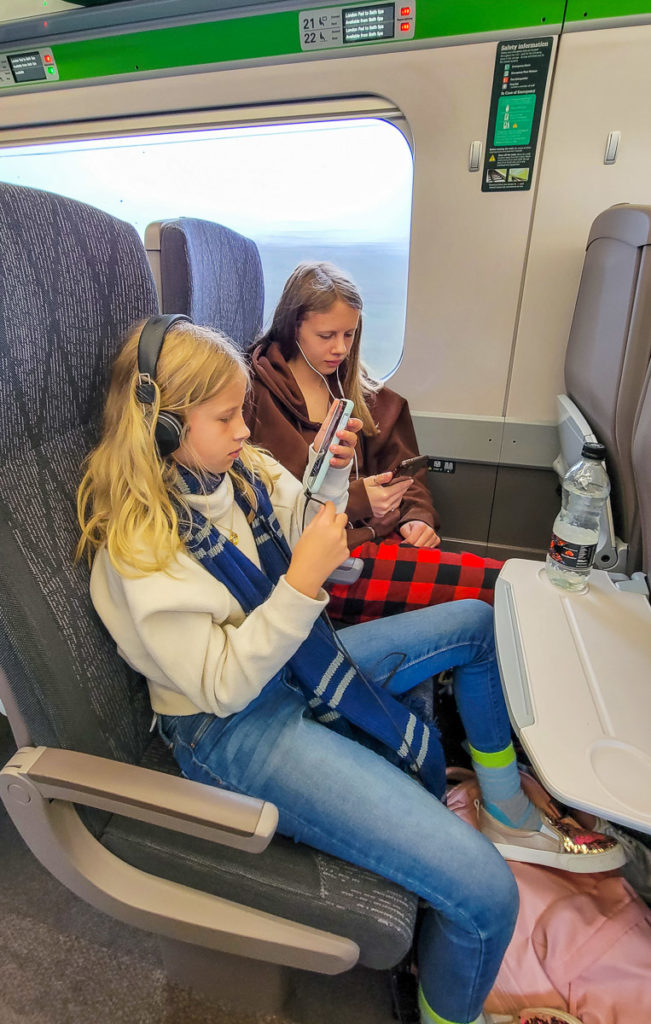
- Uber is not found as much in Europe as the US. Verona did not have it at all, so you will be using meters. Make sure taxis put the meter one.
- Often, for families, catching an uber may end up the same price or cheaper than individual train or bus tickets – especially for shorter distances. So, we always check it first.
- Be careful of traffic. We thought it would be cheaper and easier to get a taxi from Charles de Gaulle to our hotel after our red eye flight. MISTAKE! An extra two hours and 30 euro later we arrived.
- Trains are an excellent way to get around Europe. They are fast, efficient and comfortable. You can possibly book tickets on the day but use sites like Omio and Trainline in advance just to be sure.
- Buses are usually my last resort. You can often walk or get subways instead. Buses will have frequent delays due to traffic conditions!
- Subways in big cities are also an easy and affordable way to get around. If staying several days, and riding the subway a lot, it may be cheaper to purchase a daily or weekly pass. Check our post on getting around London.
- In some cities, like Vienna and Budapest, there are no ticket barriers getting on and off the train. You will need to find a little machine to validate your ticket before you get on the train. Do not attempt getting on a train without a ticket. Trust me. We did this in Budapest, only because we could not find a ticket machine anywhere or find anyone to help. So, we jumped on a train thinking we could buy a ticket from a ticket person on the trail or when we arrived. Oh no. The ticket guy was not having it. He gave each of us a €30 fine!! What should have been a €4 journey costs us €120.
7. Driving in Europe
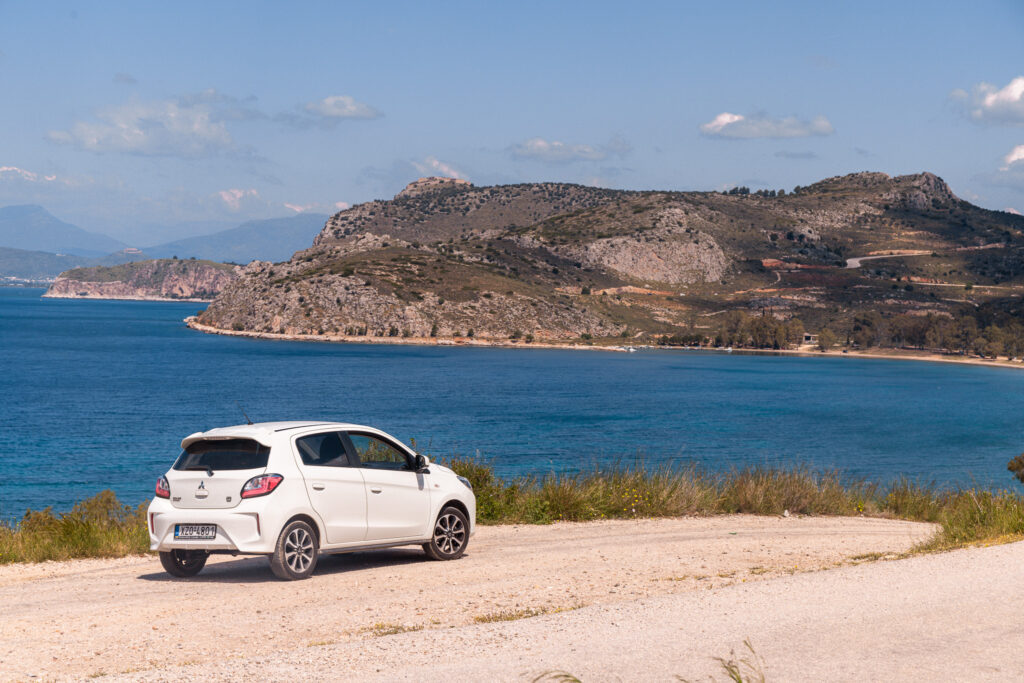
As we mentioned in our Europe planning guide, book your rental cars in advance. Here are a few tips for when you are on the road in Europe.
- Cars and luggage space will be smaller in Europe. Allow for this when booking and take less luggage!
- Fuel is really expensive in Europe, especially if you are coming from America (but don’t worry almost everything else is cheaper)
- On continental Europe they drive on the right, same as in the USA. In the UK, they drive on the left, same as in Australia.
- You typically won’t need an international driver’s license (but check on that as it varies from country to country) and I wouldn’t recommend driving if you don’t feel confident.
- Europe is far more eco-conscious than the US. Some cities will have restrictions on driving in the city center and can charge hefty fees and taxes if you do.
- Driving through city centers in Europe may not be ideal. Roads are narrow and congested with all sorts of moving things from people, bikes, scooters, vespas, cats etc. In May, I rented a car for my Peloponnese road trip and had to drive through Athens city center on my own – it was an adventure!
- Download Google maps for the area you are driving through in case you lose wifi connection. It will not give you updated traffic information though.
- There will be a lot of toll roads. You can avoid them, but it will add time to your journey. Most will take credit card but have some cash on hand just in case. Look for the symbol for cash or a ticket man, so you know what lane to go in, as some cars can drive straight thorough with their eTag.
- Drink driving laws are strict in Europe. Don’t even try.
8. Things to Know about Accommodation in Europe
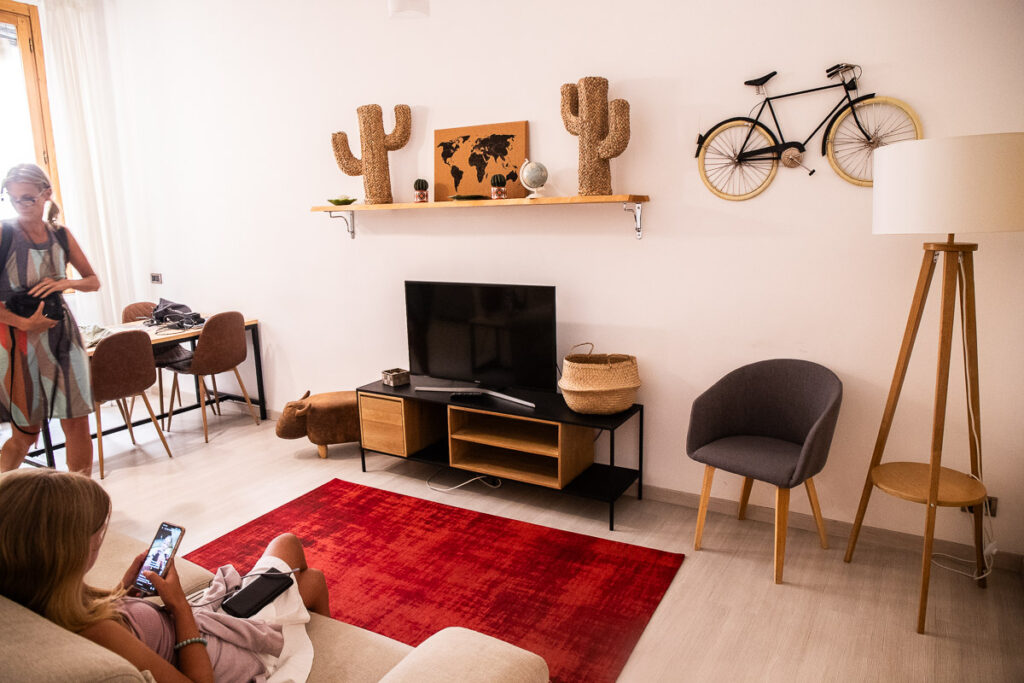
Again, we have more in-depth information on booking accommodation in our planning guide to a European vacation with kids.
Here are a few helpful tips for when you arrive:
- Accommodation is cheaper than in the USA, but you’ll find rooms are much smaller.
- You won’t find as many American chains (wahoo, although not great for using points.) Using local hotels tells a better story anyway!
- You won’t have as many in-room amenities though like body lotion and coffee. Some will. The body lotion is generally a no! Most will have hairdryers.
- There won’t be a lot of elevators, so be prepared to carry luggage.
- If you have an apartment rental, and there is laundry, be prepared for dryers that don’t work or aren’t there. The washing machines can be confusing to work.
- Not all will have parking options. There will be some valet parking for a higher price, street parking if you’re lucky, or paid parking garages. We had trouble finding parking for our apartment in La Spezia and took a gamble parking in what looked like a housing complex right near where our apartment owner told us there would be free parking. It ended up being okay, but as we were leaving, we were pulled over by a soldier and told we were in a military zone and could not be in there!!!! We were so lucky!
- You will be charged a hotel city tax at the end of the stay. Some places will only take cash. They will generally forewarn you.
- Some hotels may include bikes, our hotel in Verona did.
- Not many hotels will include breakfast – our Florence hotel did, and it was lovely. I don’t recommend you purchase it anyway, as you can get much cheaper breakfasts from a bakery.
9. Know You’ll Always be Thirsty!
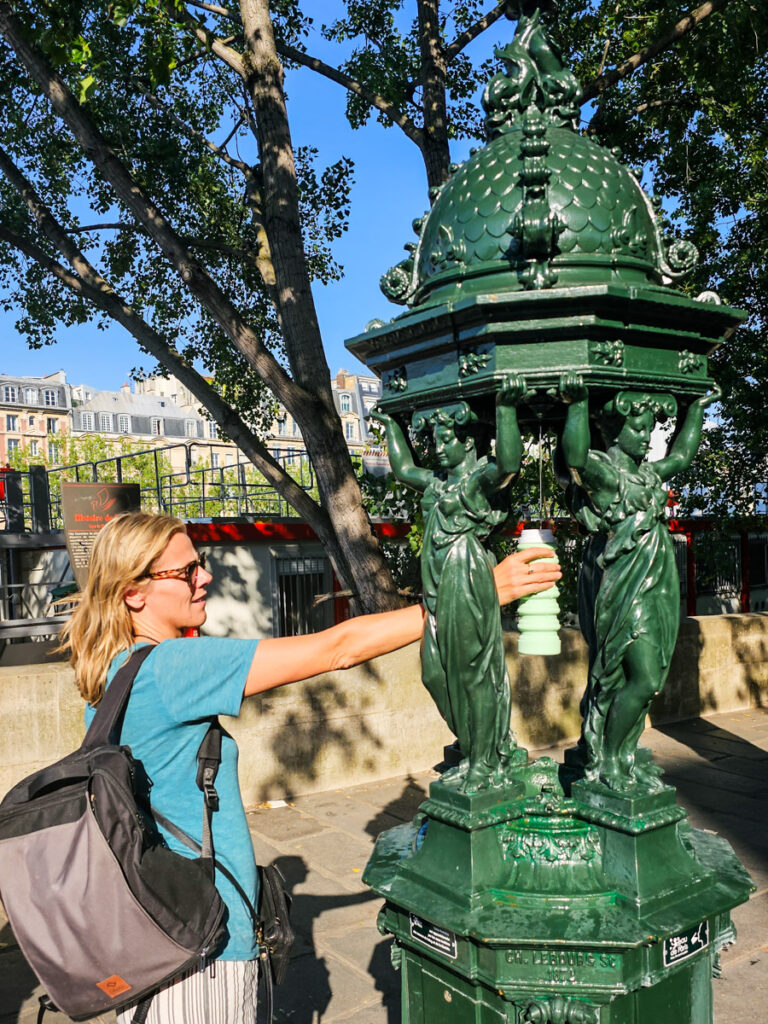
One of the things we missed the most about the USA on this Europe trip was having easy access to unlimited drinking water. It doesn’t mean you can’t find water in Europe.
In fact, Rome and Paris had plenty of free drinking fountains around the city to encourage the use of refillable water bottles. Other places did too, just not as much.
However, getting water at a cafe or restaurant is a task!! In the US, as soon as you sit down a pint glass of ice water is filled and topped up without asking for the remainder of your time.
In Europe, you have to ask for water, then they bring out tiny cups – in one café in Venice we got espresso glasses – and you have to keep asking for it.
The weather is so dry, and service so slow, that we felt we were dying for water most of the time.
As soon as you sit down ask for multiple carafes of water – they’re also tiny and are gone with one round of drink pours for all of us.
Ask for tap water, or they will bring still or sparkling and charge you. Unfortunately, most places in Italy still charge us for tap water!!
Carry around refillable water bottles and fill them whenever you get the chance. The water is fine to drink in most places, but always check to be sure.
10. Service is Slow
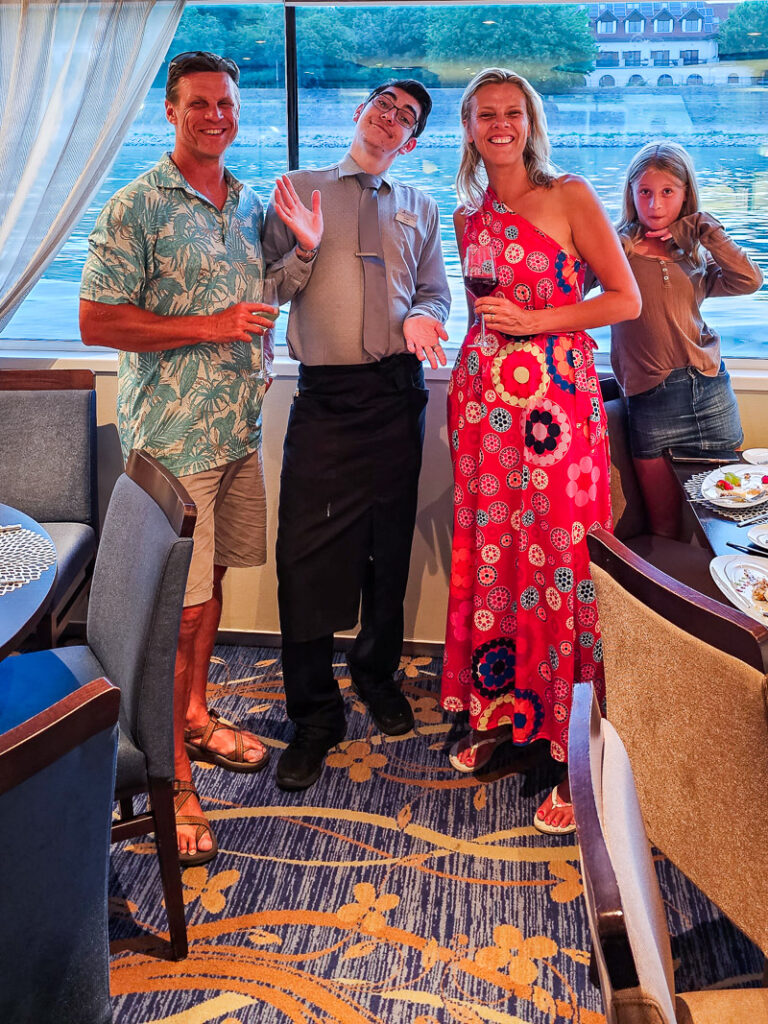
Added to that, the other thing we missed the most about the USA was the service. There really is no country like it.
Service in Europe is painfully slow and inattentive. You will be flagging and chasing down servers the entire time.
It can really drag out your eating time. So be ready to go with your order, order everything all at once, and ask for the bill as soon as possible.
The only good service we had was on our Avalon Waterways Danube River Cruise – it was extraordinary!
11. Learn Basic Phrases In European Languages
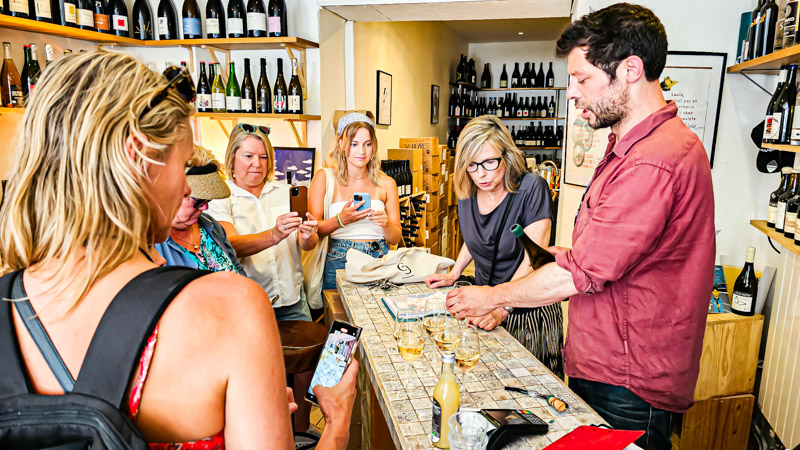
With English you’ll get by quite easily in Western Europe. But we do think it’s great manners to learn at least a few of the basics of the local language and use it regularly.
We find locals love it when you do. Keep it simple with hello, please, thank you, excuse me, cheers… You can add in more as you learn them!
Savannah learns Latin at school, so she was quite good at picking up Italian and I had her translate a few old Latin words on historical buildings for me. She also took Italian lessons on Duo Lingo before we left.
12. Or Use Google Translate
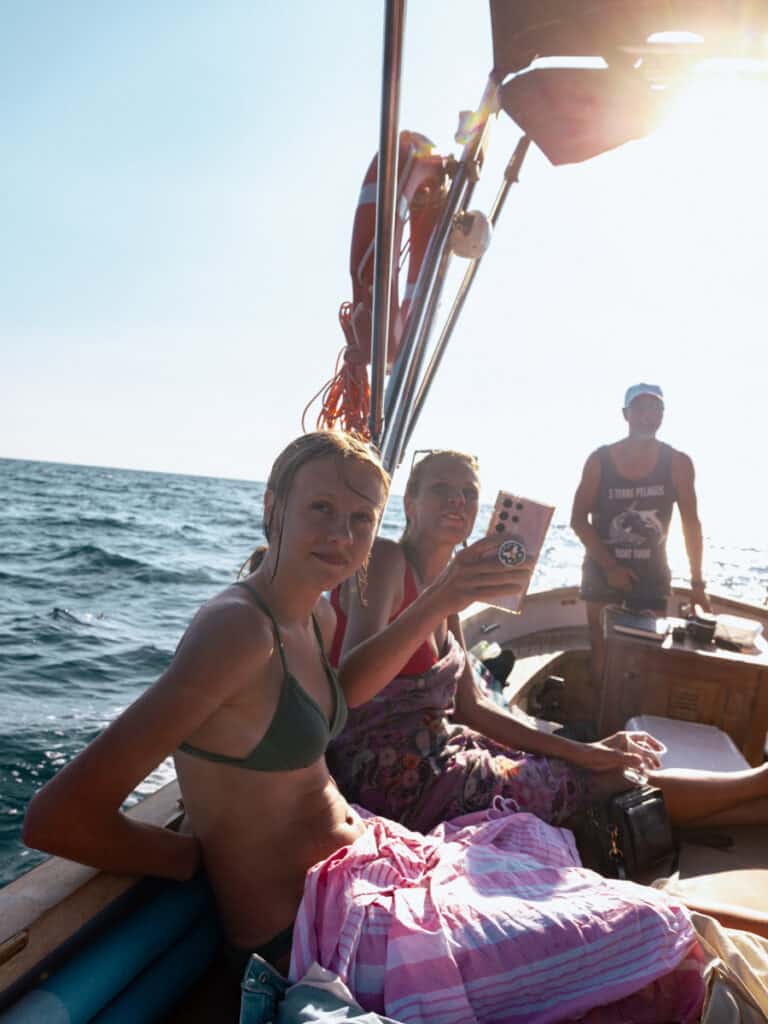
How did I travel for decades without Google translate? I enjoy trying to communicate without it more, but it came in handy when I was short on time, or when miscommunication could make me sick – like explaining my gluten free requirements.
I found most people we encountered on our European vacation spoke enough English for us to get by.
13. Let the Older Kids Stay In
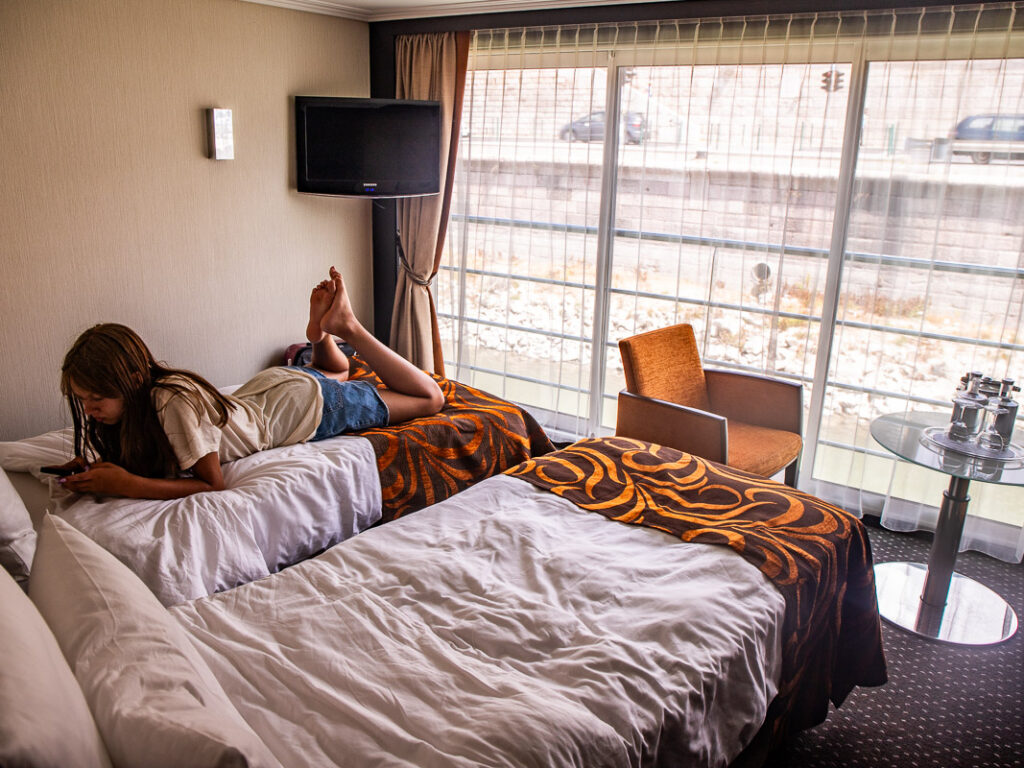
On several evenings, when the girls were tired from a busy day and just wanted to catch up with friends back home, we let them stay in the hotel or on the river ship, while Craig and I went out for a drink or a nice dinner.
We, of course, arranged to-go dinner for them before doing so. This is a tip for those traveling to Europe with older kids. We always stayed close to the apartment so we could get back if needed. They were in no rush to call us back.
It was a break all of us needed and loved.
14. You Don’t Need to tip
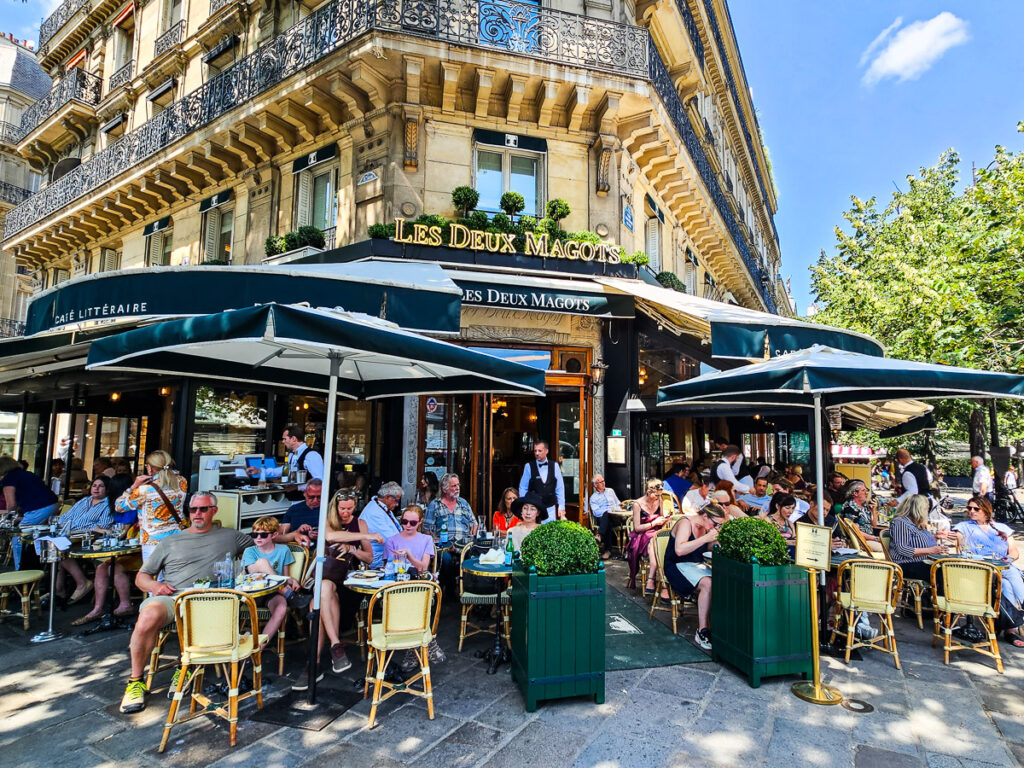
Not going to lie, I loved this. The price is the price.
Sure, service is not as good, but considering tipping has gotten out of control lately in the US, with people expecting 20-30% just to hand you over a donut, I’d rather the no tipping culture any day.
Of course, you can if you want, and sometimes we did. In Europe, it’s typically 10%. Some places will have a service charge, or per person cover charge, so check your bill. If that is on there, I would not leave a tip.
15. Get An E-Sim For Data in Europe

You will mostly get free, fast wi-fi everywhere, including accommodation, airports, trains, and even entire cities. You’ll have to ask restaurants and cafes for the passwords, but they are pretty good at giving it to you.
We traveled with our phones disconnected to international roaming. We are with AT&T who are dreadful, and I do not recommend them for anyone who likes traveling.
We are thinking of moving to GoogleFi or T-Mobile, which includes international roaming for no extra price.
ATT charges $10 a day, which is a complete rip off. If your phone is unlocked get an eSim. Our phones aren’t. Version and other carriers will let you get eSim even if on a phone plan, ATT locks your phones)
It’s an affordable and easy way to get data on your phone. Just use What’s app if you need to use your phone number. Many businesses in Europe understand What’s app and can communicate with you via that.
The number of things older kids will ask you wherever you arrive at your hotel or sit down at a café is “What’s the Wi-Fi password.” It’s how they communicate with their friends so I get it, but I was also glad to disconnect them from it, so they could be present when we were exploring.
One of the best places to purchase your eSim is through Airola. Check rates and availability here. They’re affordable, transparent, you’re connected instantly, and they have 24/7 support.
16. Accessing and Using Money

Most places take cards but carry some cash for smaller businesses. ATMs are everywhere. A great thing about traveling across Europe is most countries use the Euro, so you don’t have to change currency.
We got stuck in Budapest as they took Hungarian money – some will take euros. We were only there for a day so did not want to get Hungarian money because then we couldn’t use it. You may get that in change if you use euros.
Use cards whenever you can, especially if you point hack and your card has no foreign transaction fees. We used our credit card.
Tap and go is very popular in Europe, and typically all everyone offers. But if it doesn’t work they still have chip facilities.
You may get stuck in some places – like pay at the pump fuel – where if you use a credit card they ask for a pin number.
American credit cards don’t have pins. Pay at the pump will usually have a tap payment so look for that next to where you insert your chip.
Otherwise have a debit card on hand you can use instead if you get stuck.
17. Give your Kids a Daily budget

I only thought of this near the end of the trip, and I wish I did it. Give your older kids a daily budget and the money on their own cards.
They’re responsible for what they spend during the day including food. You may even strike a bargain where you’ll pay for one meal a day but they cover the rest. That way they can learn about budgeting and spending.
They may ask for less treats and figure out clever ways to get the best deal, and roll over excess money to the next day, which they can then spend on treats, souvenirs etc.
Souvenirs aren’t typically something we spend money on, usually because of luggage limitations. If they do, it will be jewelry or clothes – something a teen usually loves. Kalyra actually added two more books to her heavy suitcase. Read more of our top family travel tips here.
We have created a 3-page printable PDF with a step-by-step guide on planning a trip to Europe. Members of our free email community, get access to all our freebies – including planning guides, checklists, cheat sheets, and itineraries. Join by filling out the form below and get immediate access!
Final Thoughts

So there you go, those are our most essential tips for visiting EU.
We learned these tips the hard way by making mistakes and figuring it out along the way, so we hope that these tips provide you with useful insights and inspiration for your upcoming adventure.
If you’re still mapping out your itinerary, then be sure to check out our other guide on how to plan a trip to Europe to make sure you have everything covered.
So go ahead, pack your bags, and embark on a journey of a lifetime. Bon voyage!
If you have any more tips for visiting Europe, let us know in the comments section below!
[ad_2]
Source link

